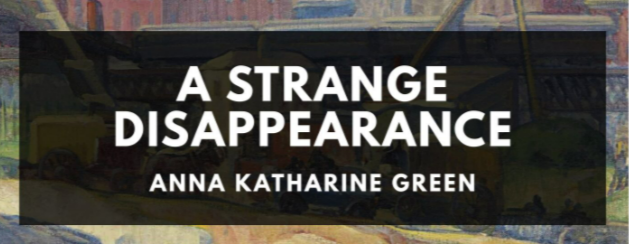CHAPTER VIII — A Strange Disappearance
byCHAPTER VIII – A Strange Disappearance draws readers into a night filled with quiet suspense, where hushed voices and overheard confessions become the gateway to unraveling deeper secrets. The narrator, under the cover of dusk, listens closely as Fanny shares what she has heard—her words quick, her tone laced with unease. She describes a conversation full of veiled threats and concealed intentions, involving a visitor of regal bearing and sharp presence. This “queenly” woman, draped in velvet and flashing with diamonds, held an intense discussion with Mrs. Daniels. Their exchange was outwardly polite, but beneath the surface, something darker trembled. When Mr. Blake unexpectedly entered the scene, Fanny’s unease grew. Curiosity led her closer, only to catch fragments of alarming phrases—whispers of a crime, spoken as if it were part of family routine.
The narrator senses the weight of this information and decides not to let it fade into hearsay. Rather than direct inquiry, a more subtle route is chosen. Knowing the mysterious woman’s love for rare antiques, he devises a clever excuse: he will “sell” her an elegant plaque, using it as a reason to gain access to her world. This plan is less about commerce and more about proximity. With the borrowed artifact in hand, he steps into a world of chandeliers and silken curtains, where appearances shield deeper truths. The Countess De Mirac, when finally approached, appears distant from her former glory. Her energy is muted, her posture more rigid. Once a woman of command and confidence, she now seems swallowed by inner distraction. The transformation, noted quietly by the narrator, speaks volumes.
The exchange begins with polite interest in the plaque, but the narrator watches closely. He reads her silences as much as her speech. Her hands linger on the item longer than necessary, but her mind seems elsewhere. Through their interaction, small details emerge—not through confession, but through mannerisms, slips in tone, and the heavy way she mentions a letter. This letter, spotted accidentally, offers a tantalizing reference to “cousin Holman,” and while its full context remains hidden, the name alone unlocks a new realm of speculation. That detail, though minor, lands with weight. It becomes a loose thread that could connect the Countess not just to society’s upper layers but to the unfolding scandal.
What makes this chapter compelling is not what’s said outright, but what’s carefully avoided. Every word the Countess shares is chosen with precision, yet the gaps between them speak louder. She is clearly guarding something, whether personal or shared, and her retreat from her vibrant self hints at burdens not meant for the public eye. The narrator, sensing the limitations of direct questioning, shifts his focus to observing. Through tone, glance, and posture, he pieces together impressions more valuable than statements. It’s not evidence in the traditional sense, but in mysteries built on reputation and fear, such impressions often prove crucial. This social investigation—performed with grace and misdirection—becomes a dance of perception.
The backdrop of elite society adds a layer of tension that makes the investigation feel more delicate. In this world, scandal is not just personal—it is political, financial, and public. The Countess’s distress isn’t merely emotional; it’s protective. She may be shielding her name, or perhaps someone else’s. Either way, she moves like someone walking a tightrope. Her eyes give nothing away, but her silences tell stories. Readers are left not with answers, but with the understanding that behind closed doors, even nobility fears exposure.
In capturing this tension, the chapter deepens the novel’s complexity. It reminds readers that truth often hides behind pleasantries and that the most damning evidence may come not from confessions but from contradictions. The narrator’s approach—part curiosity, part strategy—shows how social intelligence becomes a tool in uncovering layers of a hidden life. And as the scene closes, what remains is not resolution, but anticipation. The Countess knows something. The narrator suspects more. And the reader, now aware of the webs forming across rooms, families, and reputations, is drawn even further into a story that no longer seems like a simple disappearance.

